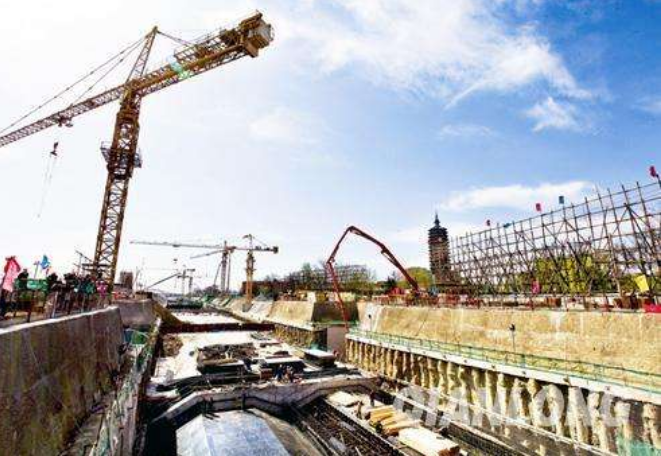Despite the complex situation and challenges facing China, the Chinese economy still has great potential to achieve medium- and high-speed growth as long as China is able to adjust inappropriate policies and deepen reforms in key areas in a timely manner, said Zhang Junkuo, deputy director at the Development Research Center of the State Council, in his article China should avoid boosting economic development through large-scale stimulus.
The expert warned that China must avoid going back to the old way of boosting growth through large-scale stimulus and avoid the tendency of relaxing or slowing down reform and opening-up because of the increased risks and challenges.
"We should keep our heads cool and unswervingly push forward with reforms and expand opening-up to achieve even greater success in transformation and high-quality development", the expert suggested.
The full text of the article is as follows:
At present, China is facing mounting uncertainties amid an increasingly complex internal and external environment, with its economic growth expected to slow down steadily in the short term. Yet, in the medium- and long-term, there will still be relatively favorable conditions and huge potential for the country's development.
From a global perspective, the world economy will see its growth rate slowing down after 2019, accompanied by the weakening momentum for recovery in major developed economies and increasing volatility in emerging economies. The global financial markets are also likely to see major fluctuations. In general, the international economic environment in 2019 will not be better than in 2018.
With regard to the domestic environment, China's economic growth will continue to decline slightly in 2019, with the China-US trade dispute being the biggest external uncertainty. While the long-term impact of China-US trade frictions since 2018 hasn't been fully seen, its influence on China's industrial chain, under the global division of labor as well as the expectations and confidence of some enterprises, should not be ignored. Meanwhile, expectation for domestic demand continues to weaken. Under the internal and external pressures, investment demand for infrastructure, real estate development and manufacturing will face relatively large downward pressure. In terms of consumption demand, while the carryover effect of policy factors will be lessened in 2019, consumption ability and willingness to consume are unlikely to see any change in the short term.
Despite the complex situation and challenges facing China, it is also necessary to have an idea about the many favorable factors, advantageous conditions and potential for China's development at the current time. Irrespective of the supply or demand conditions that are vital for development, the Chinese economy still has great potential to achieve medium- and high-speed growth as long as we are able to adjust inappropriate policies and deepen reforms in key areas in a timely manner, based on changes in the environment and development realities. In addition, there must be a focus on building the mechanisms that can support high-quality economic development so as to fully release the growth potential, which will lay the foundation for stable growth in the long run.
Although we are facing more difficulties and challenges, two misunderstandings or tendencies must be avoided. First, we must avoid going back to the old way of boosting growth through large-scale stimulus. Second, we must avoid the tendency of relaxing or slowing down reform and opening-up because of the increased risks and challenges. At some point in the future, as long as we keep our heads cool and unswervingly push forward with reforms and expand opening-up, we will surely make full use of our own favorable conditions and factors to achieve even greater success in transformation and high-quality development.
At present, a lot of things need to be done to deepen reform and to improve the environment for high-quality development.
First, the role of the government must be further transformed to focus on improving the social environment, which should be conducive to resource optimization and structural upgrading. The most crucial thing is to reduce the government's direct intervention in economic activities, especially in terms of the direction and mode of industrial upgrading, the industrial mechanism for selecting the superior and eliminating the inferior, and reorganization.
Entering a high-quality development stage means that economic growth will rely more on innovation, thus technological progress and industrial development will face greater uncertainty. Which technology, industry or company has more promising prospects or needs to be eliminated can only be tested by market competition. Excessive direct intervention by the government will not only distort market signals and reduce market efficiency, but will also cause new losses and accumulate new risks.
Second, based on actual situational changes, it is necessary to update and upgrade standards for quality, environment and safety in a timely manner and enforce them strictly. A common problem in many industries is that the national standards are too low and they are not strictly implemented.
Third, efforts need to be made to build a market environment for high-quality products and for selecting the superior. From the supply-side perspective, the key to promoting high-quality development is to greatly improve the quality of products and services.
Fourth, the institutional environment needs to be further improved to facilitate innovation and change. The importance of innovation to promote high-quality development is surely beyond doubt.
Fifth, some key or major reforms that are of vital significance and fundamental to supporting high-quality development as well as enhancing the overall economic vitality and competitiveness must be accelerated. These include reforms in such areas as land system, State-owned enterprises, finance and taxation, social security, and the personnel system for officials.




 A single purchase
A single purchase









